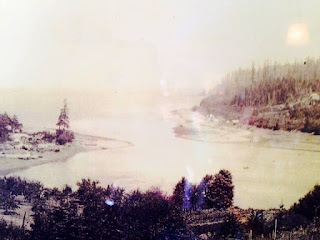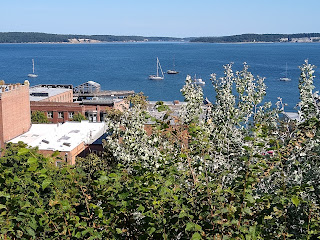Here's two glimpses of images showing Seattle's Salmon Bay's entry into Shilshole Bay before the Chittenden (or Ballard) Locks dredging and the current view.
The Shilshole people called the mouth of Shilshole 'sHulsHOOLOOTSeed'
Originally the channel had a few sandbars stretching across and was wade-able at low tide. Shilshole means 'like shoving a thread through a bead.'
Before dredging, a large sandbar existed (seen here) on top right on the Ballard side just south of Ray's Boat house, called 'Hanging on the Shoulder' or KeehLalabud.' The sandbar was known for good clamming. Photo: MOHAI.
Dredging for the Locks occurred around 1915 ish.
As 'settlers' arrived and built logging mills upstream in downtown Ballard, boats could only enter or exit at high tide.
The image above shows tall masted ships moored in Shilshole Bay probably waiting for the tide and their turn to enter the narrow mouth.
Here's a 'Washington Territory' pre-Locks chart of the same area showing sand bars and undeveloped shoreline of Salmon and Shilshole Bays.

























